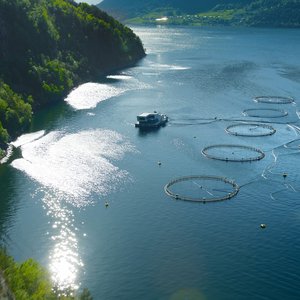Farmed fish from Asia can provide Norwegian fish with tough competition in the European market place, according to a report prepared by Fiskeriforskning.
It is in particular the farmed fish species pangasius - also known as Vietnamese pangasius catfish - that is showing strong growth in Europe. Vietnam is the largest producer of this white fish species.
The white flesh and low price results in the fish in the first instance being a potential competitor to frozen Norwegian white fish products such as cod, saithe, haddock, redfish and Greenland halibut.
Norwegian products have not thus far felt the effect of the imports of pangasius, which, according to the report issued by the Fiskeriforskning as a commission from the Ministry of Fisheries and Coastal Affairs, is probably due to that the increase in imports from Vietnam has coincided with the increase in demand for seafood in the EU.
Strong growth
Production of pangasius is in a period of strong growth, and one expects the volume to reach in the region of one million tonnes in 2010. Pangasius is sold as frozen fillets to the EU.
Imports are increasing at a rapid rate, and reached approximately 130 000 tonnes in 2006. Russia imported more than 40 000 tonnes.
The most important market for pangasius in Europe is large scale catering, such as hospitals, canteens and public institutions, where low price is often a decisive factor when purchasing products.
New products
The report points out that a large number of European frozen fish producers are now launching products with pangasius, and that several new products are making the entry into the major grocery chains.
There is in other words every reason to take the competition from pangasius seriously.
Norwegian fish may feel the competition in particular in frozen consumer pack products, for example breaded fish, where the species does not necessarily have any great influence on the consumer's choice of product.
There is however continued uncertainty with regard to the effect and consequences of the increase in imports of new species.
To scenarios
One possible scenario is that the demand for seafood in the EU increases to the degree that it absorbs the expected increase in the production of pangasius.
Another scenario is that growth in consumption falls while at the same the market is flooded with cheap fish from Vietnam.
The last mentioned situation could have serious negative consequences for the segment of the Norwegian fish industry that meets the same end-user requirements as pangasius.
Tilapia also on the way
The report also discusses the tropical species tilapia, which is also a potential competitor to Norwegian fish products. The consumption of tilapia has shown very strong growth in the USA, but it is still a relatively unknown species with a relatively modest market share in Europe.
It is likely that the market for tilapia will grow in Europe as well, but it remains uncertain what the volume of imports will be and what species, if any, will be affected by the competition.
Need strategies
The report points out that the Norwegian fisheries and aquaculture industries are well equipped to meet the threat of competition from new species, and that there a number of strategies that can be applied.
One of the advantages is the short distance to the mainland European markets, which makes it possible to develop fresh fish products that will command a good price.
Norway also has long traditions with well-established products such as clipfish, salted fish and stockfish - and these are speciality products that can give continued growth.
Further, many European consumers have a personal economy that permits them to purchase Norwegian seafood, even though prices may be higher than produce from some other countries.
The pre-condition is that Norwegian products have more to offer that makes them attractive.
On the basis of the ever-increasing rate of change in the global seafood market, the report recommends that increased emphasis be placed on market analyses and product development.
The report "Økt konkurranse fra nye arter på det europeiske sjømatmarkedet" can be downloaded here (Norwegian version only).
The contact person at Fiskeriforskning is Director of Research Bjørn Eirik Olsen, telephone + 47 77 62 90 24.







